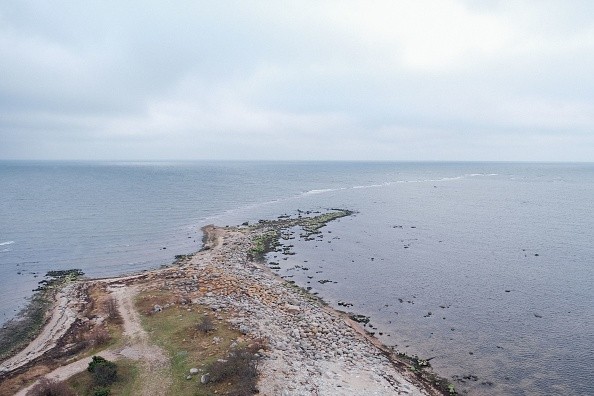A stone age wall discovered beneath the waves off Germany's Baltic coast may represent one of the oldest known hunting structures used in Europe, around 11,000 years ago.
The wall, extending over a kilometer along the Bay of Mecklenburg's seafloor, was discovered by accident when scientists used a multibeam sonar system from a research vessel on a student trip about 10 km (six miles) offshore.

Upon more thorough examination, the Blinkerwall structure consisted of over 1,400 smaller stones arranged in a way that interconnected nearly 300 larger boulders, many of which were too heavy for groups of humans to have moved.
Researchers believe the submerged wall, covered by 21 meters of water, described as a "thrilling discovery," was built by hunter-gatherers more than 10,000 years ago on the land next to a lake or marsh. While the purpose of the wall is hard to prove, scientists believe the wall was built to provide a driving lane for hunters pursuing reindeer herds.
"When you chase the animals, they follow these structures, they don't attempt to jump over them," Jacob Geersen at the Leibniz Institute for Baltic Sea Research in Warnemünde, a German port town on the Baltic coast, said.
He added that the idea would be to create an artificial bottleneck with a second wall or with the lake shore.
The researchers report in Proceedings of the National Academy of Sciences that a second wall could run alongside the Blinkerwall submerged in the bottom sediments.
Another possibility is that the wall drove the animals into the nearby lake, slowing them down and providing easy prey for humans waiting in canoes with spears or bows and arrows.
Geersen and his colleagues think it is implausible that the 971-meter-long wall was formed through natural processes, such as a huge tsunami moving the stones into place or a moving glacier leaving behind the stones.
The angle of the wall, which is mostly less than 1 meter high, is in a different direction when it meets the larger boulders, suggesting the piles of smaller stones were positioned intentionally to connect them up. The estimated combined weight of the wall's stones is over 142 tonnes.
If the wall served as a historic hunting route, it was most likely constructed more than 10,000 years ago and submerged 8,500 years ago due to rising sea levels.
"This puts the Blinkerwall into a range of the oldest known examples of hunting architecture in the world and potentially makes it the oldest man-made megastructure in Europe," the researchers said.
Hunting Structures Around the World
The discovery was the earliest Stone Age hunting structure in the Baltic Sea region. However, similar prehistoric hunting structures have been found worldwide, including Saudi Arabia, Jordan, Greenland, and the US, and traps known as "desert kites" have also been discovered.
Stonewalls and hunting blinds intended for caribou hunting have previously been uncovered at the bottom of Lake Huron in Michigan at a depth of 98 feet (30 meters). According to the study's authors, the Lake Huron wall's construction and location, including a lakeshore to one side, is similar to the Baltic Sea walls.
Meanwhile, the scientists continue their investigation in the Baltic using sonar and sounding devices and planning future dives to search for archaeological discoveries. Geersen said that such findings may only be made by integrating the knowledge of specialists in disciplines such as marine geology, geophysics, and archeology.
Related Article : Scientists Discover Hidden Ocean Beneath Death Star-Like Moon of Saturn








